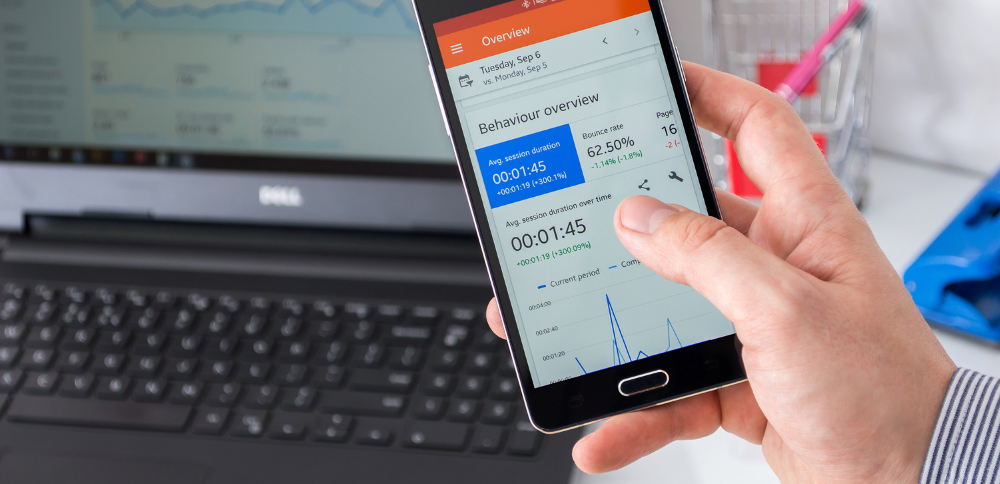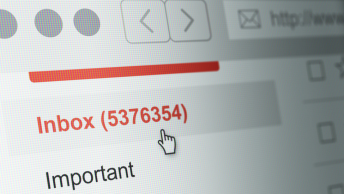If you’re familiar with email marketing, you know how important it is for generating business. It’s a cost-efficient, actionable way to share your message with readers. You can get targeted traffic, increased brand awareness, strengthened consumer relationships, and much more. You want to track email campaigns to determine the success of your efforts. Keep reading to learn how.
The Importance of Tracking Email Campaigns
Why track email campaigns?
You want your emails to reach and be read by the most people. Tracking helps you gauge the effectiveness of your emails:
- Are you meeting your open rates?
- Is your campaign generating leads?
- Are you converting leads into customers?
And, you won’t be able to answer these questions without email campaign tracking. So, now that you know why you should track your campaigns, how do you actually track email campaigns?
SEE ALSO: 10 Engagement Metrics You Should Be Tracking
How to Set Up Google Analytics to Track Email Campaigns
Tracking email campaigns is so powerful because now, you can monitor your email marketing efforts beyond email distribution! Google Analytics is a great tool for tracking email campaigns for free.
Anyone can use Google Analytics to track email campaigns. Normally, with Google Analytics in place, when a visitor lands on your site, you can track where they came from (the source). Email campaign tracking with Google Analytics allows you to further segment traffic.
Tracking URLs in Google Analytics
Tracking all your efforts provides you with valuable insight into what’s working and what is simply a waste of your time and efforts. Trackable URLs ensure you maximize what works, and drop what doesn’t favor your brand.
When Should You Use Trackable URLs?
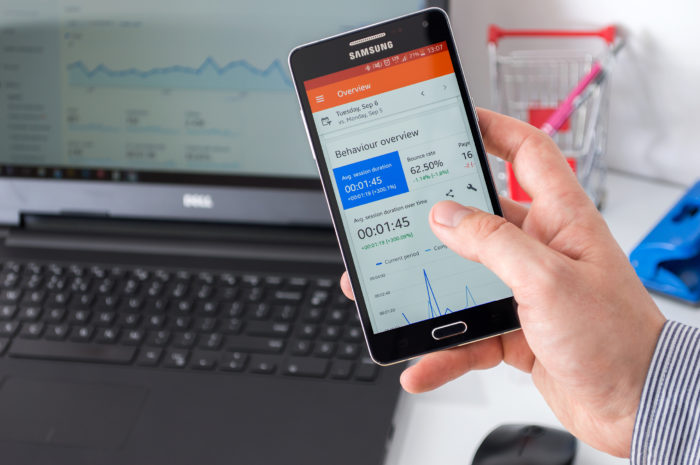
You want to use a trackable URL whenever you are directing traffic to a page from anywhere other than your own site.
Here’s how trackable URLs work in each of the following situations:
Email Campaigns: Trackable URLs help you know which specific emails are converting readers and which aren’t.
Guest Blog Posts: Using a trackable URL can help you find out how much of your site traffic is a result of the efforts of a guest contributor.
Social Media: Trackable URLs on social can tell you how many people click on the links to check out your products and services and if they are actually making purchases.
Influencers: Influencer marketing is one of the quickest ways to drive traffic to your site, but you need to give your influencers a trackable URL so you can figure out how their audiences are responding to your brand.
Banner Ads: Trackable URLS easily allow you to test ads and compare the effectiveness.
SEE ALSO: How to Get Promoted by Social Media Influencers When You’re a Newbie
Custom Campaigns in Google Analytics
Adding parameters to your URL is crucial in order to capture important data during your campaign.
UTM parameters are small pieces of information, also known as tags, that you add at the end of a URL. These tags give Google more information about the link and when someone clicks the link, the tags are tracked by Google Analytics.
Adding parameters manually yourself or using a URL builder is called creating a Custom Campaign.
With Custom Campaigns, you are able to collect information to see which campaigns are most effective.
For example, your new offer might be producing lots of income for you but, if you have influencers promoting your offer to their mailing lists , you’ll want to know how their campaigns are performing and which is generating the most revenue.
UTM Parameters for Email Campaigns
You want to be sure to use these UTM parameters when creating your trackable URLs in Google Analytics.
- Campaign source (utm_source): generally used to describe the main source or the referrer where the link will be placed, for example a newsletter which can be your own or the email list you are using for a sponsored email.
- Campaign medium (utm_medium): used to describe marketing activity. For example, are sending a daily email, weekly email, or special promotion?
- Campaign name (utm_name): overall campaign you’re running. Article name, product launch, summer campaign, seasonal sales…
Optional parameter
- Campaign Content (a/b testing): use this parameter to differentiate links that point to the same URL. For example if you include an image link and a text link.
Building Your Own Custom Campaign
Lets take a look at how to set up tracking for email campaigns.
First things first. To set up Google Analytics tracking, you will need to have your website linked to Google Analytics. You can connect your site to Google Analytics pretty easily using these instructions.
Next, you want to create your trackable URL.
Follow these steps to create your own trackable URL for your email campaign.
1.) Visit https://ga-dev-tools.appspot.com/campaign-url-builder/

2. Enter your website URL
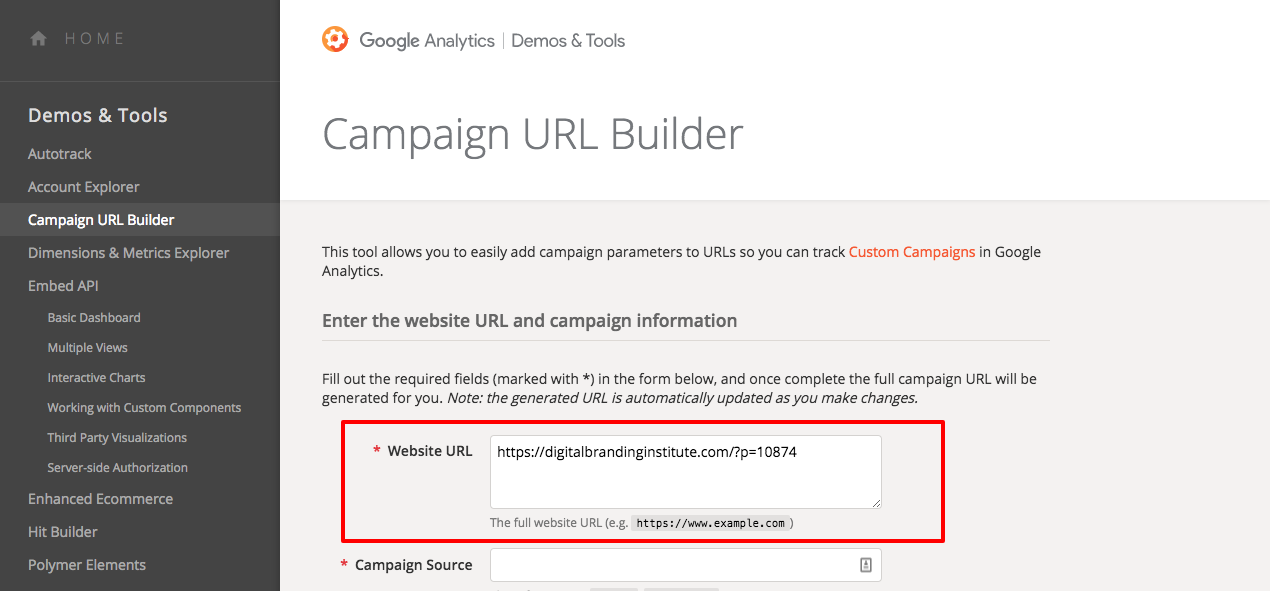
3. Enter your campaign source
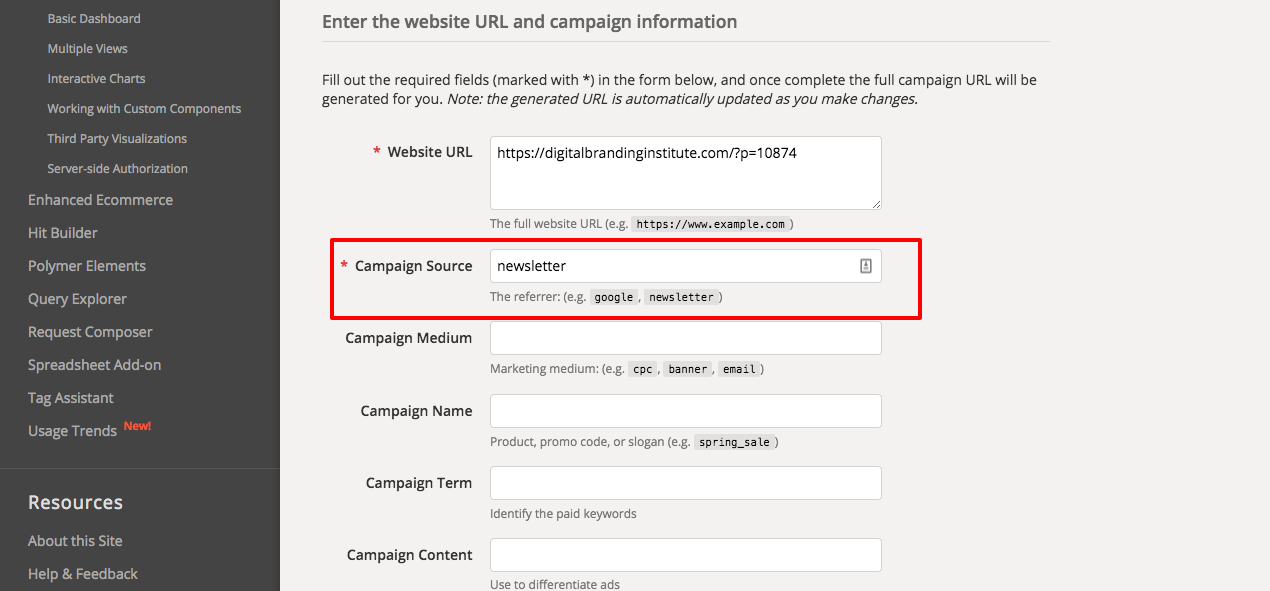
4. Enter your campaign medium
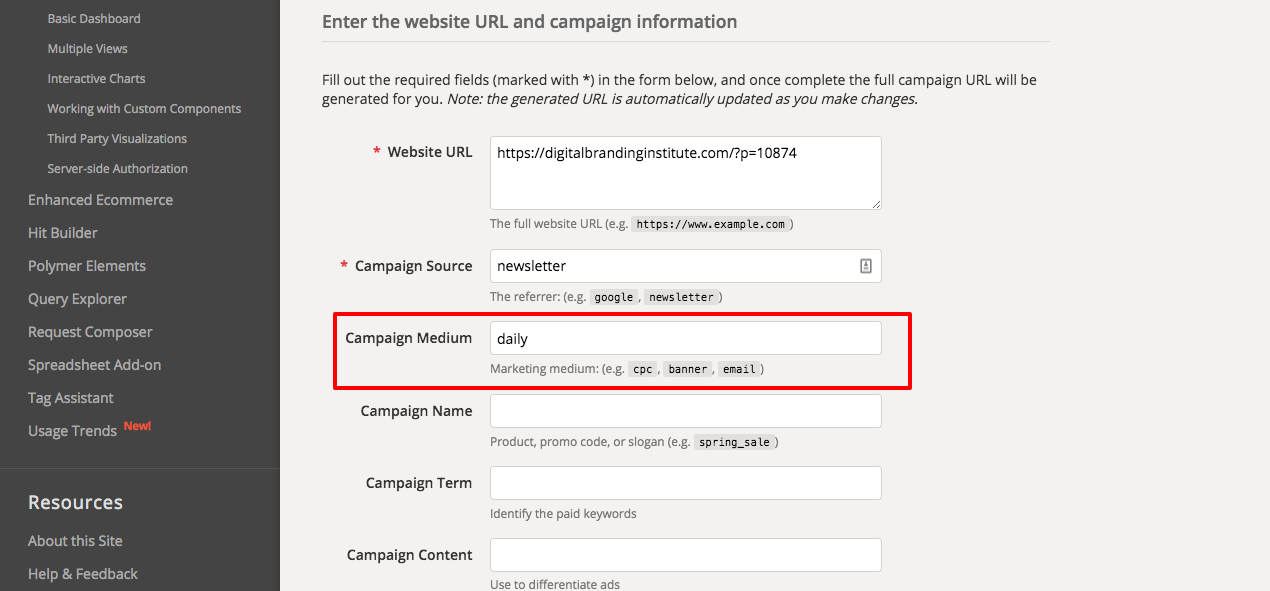
5. Add your campaign name

6. Optional*: Enter your campaign content
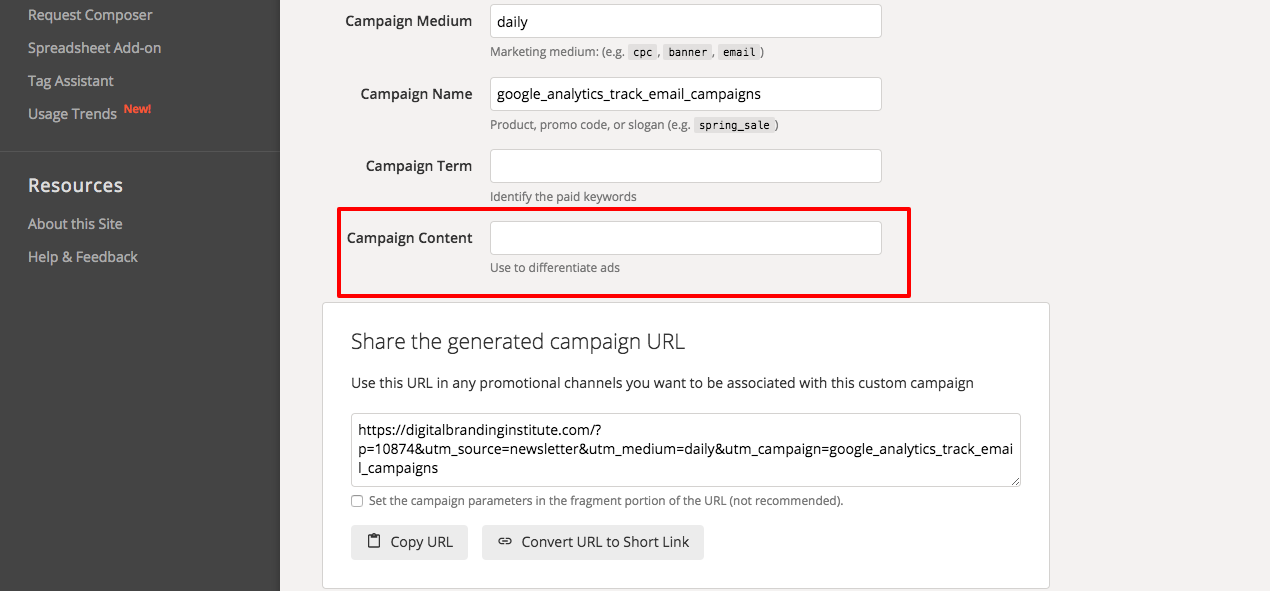
7. Copy URL
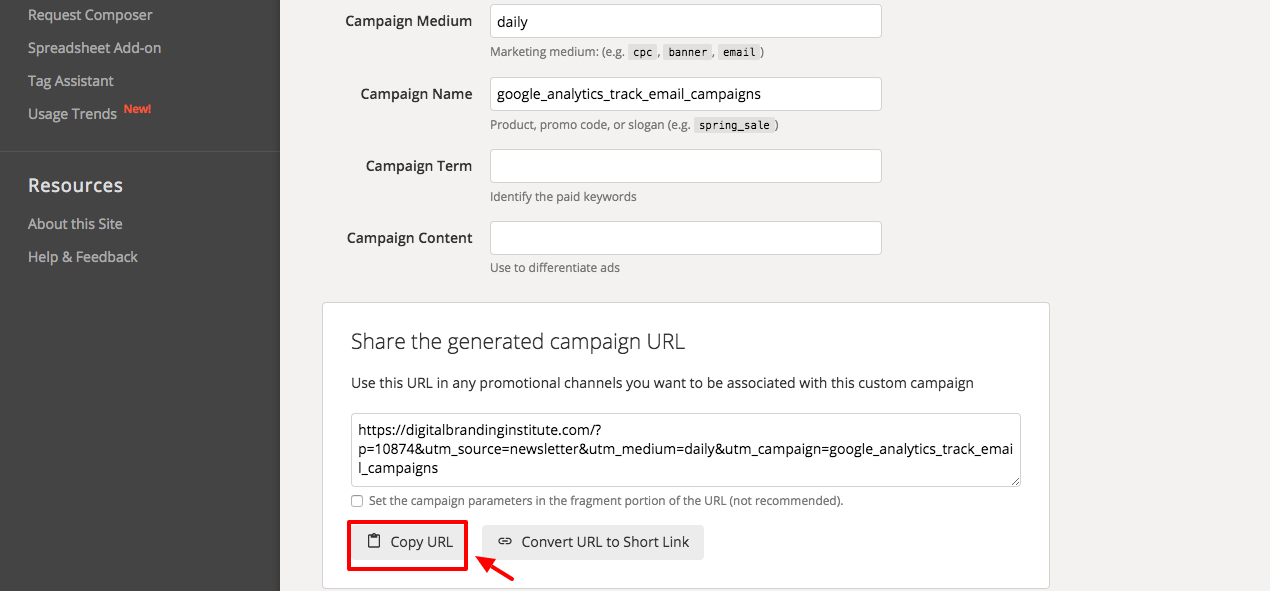
8. Add your URL to your emails or send trackable URLS to influencers and partners
Example:
https://digitalbrandinginstitute.com/?p=10874&utm_source=newsletter&utm_medium=daily&utm_campaign=google_analytics_track_email_campaigns
Best Practices for building trackable URLS
While there isn’t a right or wrong way to build trackable URLs, I’ll give you a few suggestions based on personal experience.
- Consider a standard naming convention before starting. Things can get messy and difficult to read of unless you have a standard practice from the beginning.
- Don’t write anything you wouldn’t want your audiences to see
- Always use lowercase letters
- Links can get long so you can use a link shortening service such as bit.ly to make them manageable.
- Only create parameters that are necessary, no need to overdo it
Viewing Your Campaign Reports
The URLs you create are automatically tracked as they’re clicked. It can take Google a day before the performance is registered on your report. Follow these steps to view your reports to see how your campaigns are performing.
1. Visit your Google Analytics dashboard
2. Click Acquisition
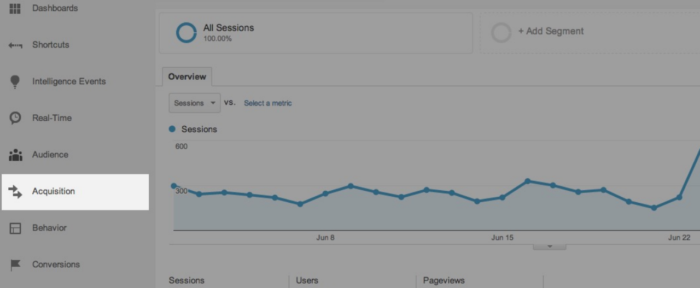
3. Click Campaigns
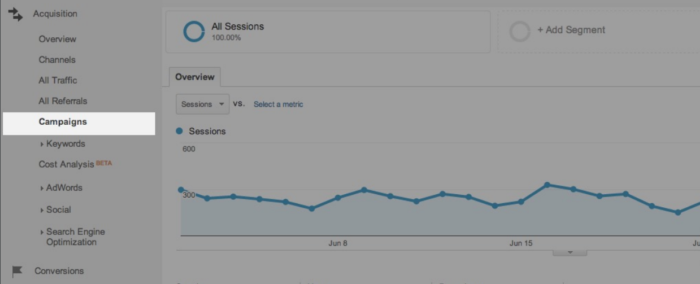
Here, you can view the metrics you care about the most and decide what actions to take in the future.
Final Thoughts
Using Google Analytics to track email campaigns is very beneficial. The more you track, the more you’ll understand about your audience, allowing you to optimize your email marketing efforts.
Do you have any email marketing tracking tips? Share your thoughts in comments. We would love to hear your feedback.


